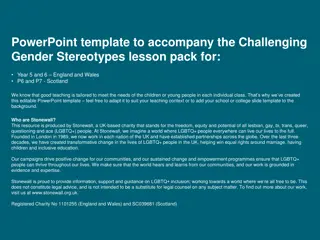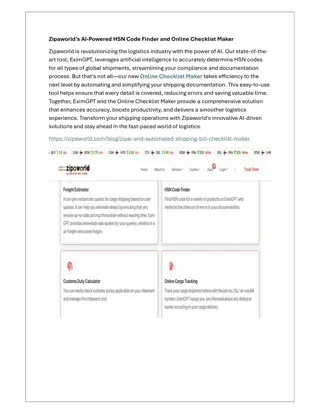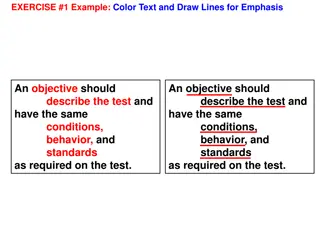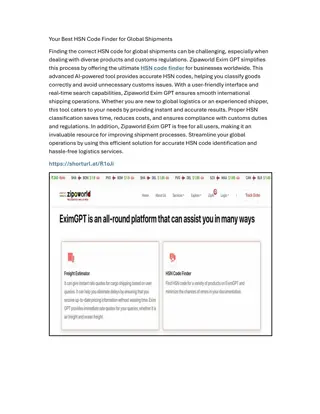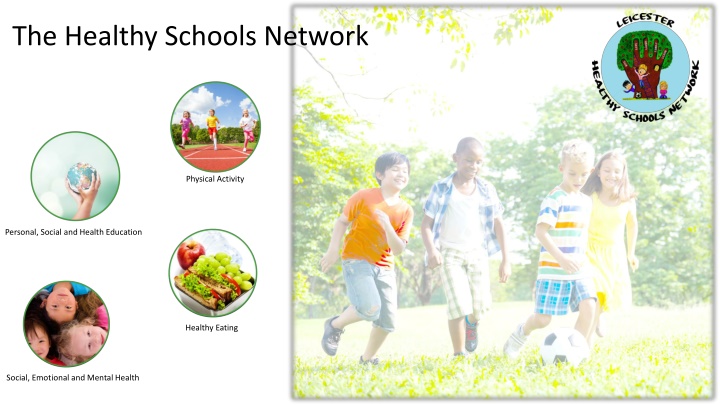
The Healthy Schools Network and Whole School Approach for Children's Wellbeing
The Healthy Schools Network promotes health and wellbeing in Leicester City schools while the Whole School Approach integrates physical, social, and mental health within the education system. Learn about their mission, principles, and strategies for supporting children and young people.
Download Presentation

Please find below an Image/Link to download the presentation.
The content on the website is provided AS IS for your information and personal use only. It may not be sold, licensed, or shared on other websites without obtaining consent from the author. If you encounter any issues during the download, it is possible that the publisher has removed the file from their server.
You are allowed to download the files provided on this website for personal or commercial use, subject to the condition that they are used lawfully. All files are the property of their respective owners.
The content on the website is provided AS IS for your information and personal use only. It may not be sold, licensed, or shared on other websites without obtaining consent from the author.
E N D
Presentation Transcript
The Healthy Schools Network Physical Activity Personal, Social and Health Education Healthy Eating Social, Emotional and Mental Health
What is the Healthy Schools Network? The Healthy Schools Network was set up as a response to demand expressed in the April 2016 survey of Leicester City schools and is supported by the School Development Support Agency (SDSA)*. The Network is a programme aimed to meet the health and wellbeing needs of children and young people, helping to raise attainment levels within schools and aims to bring together and showcase the provision available for schools by building relationships from around the East Midlands. The Network is designed to offer school-to-school support for this vital aspect of the wider curriculum and the arrangements, in Leicester, are now school- funded.
The Whole School Approach Healthy Schools takes an organisational or whole systems approach with the aim of integrating health and wellbeing within the ethos, culture, routine life and core business of the school setting. This is called the whole school approach and involves addressing the needs of pupils, staff and the wider community, not only within the curriculum, but across the whole-school and learning environment. The whole school approach encompasses these nine over-arching areas of school improvement: leadership, management and managing change policy development learning and teaching, curriculum planning and resourcing school culture and environment giving children and young people a voice provision of support services for children and young people staff continuing professional development (CPD) needs, health and wellbeing partnerships with parents/carers and local communities assessing, recording and reporting the achievement of children and young people.
The Eight Principles of a Whole School Approach (Promoting Children and Young People s Emotional Health and Well-Being a Whole School and College Approach, Public Health England and Young People s Mental Health Coalition, March 2015) 1. Leadership and management that supports and champions efforts to promote emotional health and wellbeing 2. An ethos and environment that promotes respect and values diversity 3. Curriculum, teaching and learning to promote resilience and support social and emotional learning 4. Enabling student voice to influence decisions 5. Staff development to support their own wellbeing and that od students 6. Identifying need and monitoring impact of interventions 7. Working with parents/carers 8. Targeted support and appropriate referral
The Eight Principles of a Whole School Approach https://www.gov.uk/government/publications/promoting- children-and-young-peoples-emotional-health-and-wellbeing
About your school What is your schools mission statement? Who are the lead members of staff responsible for aspects of health and wellbeing at school? Area Lead Member Personal, Social and Health Education (PSHE) Physical Activity Social, Emotional and Mental Health (SEMH) Healthy Eating
Development for this academic year Whole Community Yourself Pupils Staff e.g., Enhance the knowledge of health and wellbeing to the community e.g., Developing my understanding of Health & Wellbeing. e.g., Encourage staff to deliver outstanding PSHE lessons. e.g., Develop resilience.
What are the key health and wellbeing policies at your school? You may wish to list these and keep a note of the date each policy is next due for review. Last Review Month/Year Next Review Month/Year PSHE education Sex and relationship education (SRE) Confidentiality Policy / Statement Inclusion/Special Educational Needs Policy E-Safety Safeguarding Policy Physical Activity (not just PE) Anti-bullying (Emotional health & wellbeing) First Aid & Medication Food Policy Behaviour & Discipline No Smoking Policy & managing drug related incidents Drug education policy Travel plan
How confident do you feel? With 1 representing minimal/no knowledge and 10 representing extensive knowledge How much of an understanding do you have around: 1 2 3 4 5 6 7 8 9 10 PSHE Physical Activity SEMH Healthy Eating
Personal, Social and Health Education (PSHE) About PSHE In July 2018, the government announced that all schools will have to teach Relationships and Sex Education (secondary)/ Relationships Education (primary) and health education from September 2020. Included in what will be delivered: features of healthy friendships, family relationships and other relationships how relationships can affect physical and mental health staying safe online how to use technology safely, responsibly and respectfully how to keep personal information private healthy eating keeping fit prevention of health problems recognition of mental health and ways to support good mental health consent development of qualities such as confidence, resilience, self-respect wider social and economic issues
Personal, Social and Health Education (PSHE) What have you done in the past 12 months? What you do currently do? What would you like to try?
Area of Health and Wellbeing Key decision maker and how to influence Other key people and how to influence Change/improvement to see Date to achieve this by Barriers and Obstacles Leadership and management Ethos and environment Curriculum, teaching and learning Student voice Key decision maker and how to influence Other key people and how to influence Area of Health and Wellbeing Change/improvement to see Date to achieve this by Barriers and Obstacles Staff development Identifying need and monitoring impact Working with parents/carers Targeted support
Physical Activity Physical Activity is an integral part of daily life in a health-promoting school and can contribute to the physical, social and emotional wellbeing of all children, young people and staff within the school community. Engaging in regular Physical Activity and eating well are extremely important in helping to maintain a healthy body weight. Schools can use the Healthy School criteria to provide evidence that there is a sustainable whole-school approach to Physical Activity. Any type of Physical Activity is beneficial, and just encouraging children and young people to reduce the amount of time they spend sitting or being inactive is a good starting point. Children and young people aged 5-18 should engage in moderate to vigorous intensity physical activity for at least 60 minutes and up to several hours a day.
Physical Activity What have you done in the past 12 months? What you do currently do? What would you like to try?
Area of Health and Wellbeing Key decision maker and how to influence Other key people and how to influence Change/improvement to see Date to achieve this by Barriers and Obstacles Leadership and management Ethos and environment Curriculum, teaching and learning Student voice Key decision maker and how to influence Other key people and how to influence Area of Health and Wellbeing Change/improvement to see Date to achieve this by Barriers and Obstacles Staff development Identifying need and monitoring impact Working with parents/carers Targeted support
Social, Emotional and Mental Health A focus on Emotional Health and Wellbeing is critical to the social development and educational achievement of children and young people. To reflect this, schools have had a duty to promote health and wellbeing since 2007. Children and young people need to be able to bounce back when life gets tough. It is important for them to be able to manage their emotions and behaviour in an appropriate way.
Social, Emotional and Mental Health What have you done in the past 12 months? What you do currently do? What would you like to try?
Area of Health and Wellbeing Key decision maker and how to influence Other key people and how to influence Change/improvement to see Date to achieve this by Barriers and Obstacles Leadership and management Ethos and environment Curriculum, teaching and learning Student voice Key decision maker and how to influence Other key people and how to influence Area of Health and Wellbeing Change/improvement to see Date to achieve this by Barriers and Obstacles Staff development Identifying need and monitoring impact Working with parents/carers Targeted support
Healthy Eating Good eating habits are developed during childhood. If encouraged to enjoy healthier food and drink early on, it is more likely that these positive behaviours will remain with children and young people throughout life. Children and young people spend, on average, a quarter of their waking lives in schools, so schools can have a positive influence over their knowledge, experience and behaviour. The knowledge developed in the classroom about a healthier diet, the food that is offered and promoted throughout the school day, as well as the attitude of the whole school community, can have a major influence on children and young people. The lifelong learning skills they need to make appropriate food choices and to develop a positive attitude towards diet and health can all be influenced at school.
Healthy Eating What have you done in the past 12 months? What you do currently do? What would you like to try?
Area of Health and Wellbeing Key decision maker and how to influence Other key people and how to influence Change/improvement to see Date to achieve this by Barriers and Obstacles Leadership and management Ethos and environment Curriculum, teaching and learning Student voice Key decision maker and how to influence Other key people and how to influence Area of Health and Wellbeing Change/improvement to see Date to achieve this by Barriers and Obstacles Staff development Identifying need and monitoring impact Working with parents/carers Targeted support
A Whole School Approach to a Healthy School Now that you have looked at the four key areas and identified change and improvement needed are there any overlapping themes that could be addressed as a whole school? Are there any barriers and obstacles that need to be addressed? Do you know what to do in order to overcome the barriers and obstacles? Complete the action plan on the following slide using all four key areas.
Area of Health and Wellbeing Date to achieve this by Key decision maker and how to influence Other key people and how to influence Change/improvement to see Barriers and Obstacles Leadership and management Ethos and environment Curriculum, teaching and learning Student voice Key decision maker and how to influence Other key people and how to influence Area of Health and Wellbeing Change/improvement to see Date to achieve this by Barriers and Obstacles Staff development Identifying need and monitoring impact Working with parents/carers Targeted support

